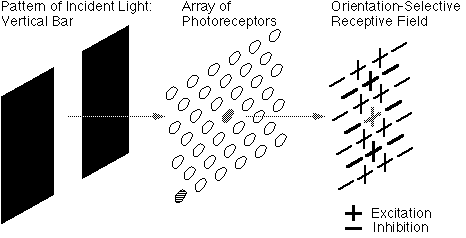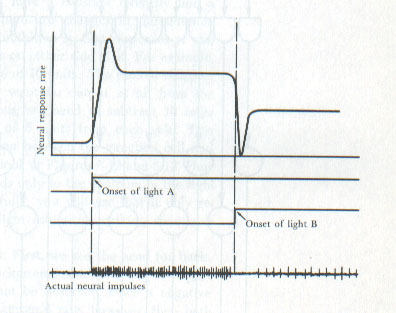
Receptive fields, binocular interaction and functional architecture in the cat's visual cortex by H. D. Hubel and T. N. Wiesel, 1962, Journal of Physiology (London), 160:106-154.
Feature detectors come in many shapes and forms (edges, color, motion, disparity). Some of the more famous are orientation-selective neurons in the visual cortex area of the monkey and in the striate cortex in cats. The latter is where Hubel and Wiesel discovered neurons strongly excited by oriented bars of light and edge-type patterns. For each location in the visual field, they found orientation-selective neurons with receptive fields at that location for each possible orientation.

The figure above shows a vertical bar of light projecting onto an array of photoreceptors. Signals from these receptors map onto excitatory locations in the receptive field, others map onto inhibitory locations. Outside of the projected image, photoreceptors do not provide input into the computations.
